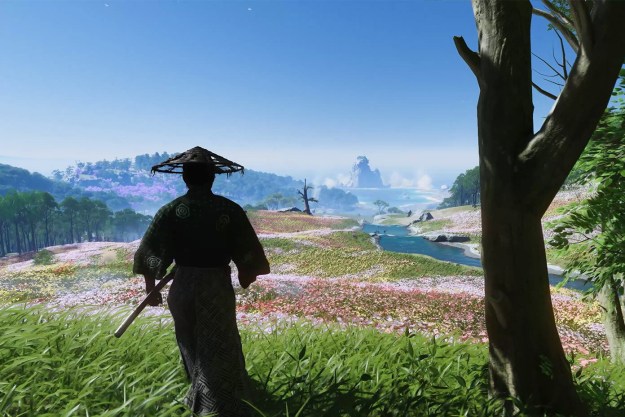Ni No Kuni: Wrath of the White Witch remains one of the most distinct RPGs of the last console generation. Combining a dream team of RPG developer Level-5 (Professor Layton, Dragon Quest VIII) and world renowned anime house Studio Ghibli (Spirited Away, My Neighbor Totoro), the promise of a playable Hayao Miyazaki film set many gamers’ imaginations on fire.
The game received a warm, if somewhat mixed reception, earning praise for its beautiful aesthetic, but criticized for its slow and grindy pace, in the vein as ’90s JRPGs. More than five years later, however, the announcement of its sequel has been stoking the flames of excitement for fans of both JRPGs and anime. We recently had a chance to play a brief demo on the E3 show floor.
Penultimate fantasy
First and foremost, players who missed the first game don’t have to worry about going back and playing it or watching a plot summary. Although many themes, images, and names will carry over to the sequel, it stands alone as its own story in its own world. Like Final Fantasy games, which reuse details chocobos, Ifrit, and a guy named Cid in every game, Revenant Kingdom shares DNA with Wrath of the White Witch, but is not connected to it.
Fans of Ghibli films will feel right at home in Ni No Kuni 2, as its characters would fit right in.
Ni No Kuni 2: Revenant Kingdom stars Evan, who at the start of the game is the young prince of Ding Dong Dell (a city name that carries over from the first title). His father, the beloved king, dies, forcing Evan to assume the throne before he is properly prepared. The citizens of Ding Dong Dell aren’t convinced that Evan is ready to lead, and so soon thereafter one of his ministers rallies the mouse people to a coup, forcing Evan out on his own.
Your game becomes a chronicle Evan’s journey: From proving he’s worthy to rule, to building a brand new kingdom from the ground up. Evan works with Roland, the well-liked president of a country from the “other world” who takes it upon himself to bring Evan under his wing and teach him how to rule. He’s also joined by Tani, the hot-headed daughter of the sky pirate boss Gatto.
Along the way they will also gather a collection of “Higgledies,” crowds of little Pikmin-like elemental spirits that help Evan in both exploration and combat. During combat, which is much more action-oriented than the first game with no pausing or digging through menus, the Higgledies will aid him by periodically providing status boosts, or joining in for charged up special attacks to increase their damage and add elemental effects.
The familiars from the first game, however, which were Pokémon-like creatures that the player captured, trained, and brought into battle, are not returning this time.
The kingdom-building system, although still light on details, is one of the new game’s features that has us most intrigued, sounding slightly reminiscent of the town-building elements in Level-5’s own Dark Cloud RPGs. After Evan has found his “Kingmaker” (a sort of guardian spirit for a kingdom that protects it and vets its leader’s worthiness), who is also lacking a kingdom, the two set out to create one from the ground up.
Evan and his friends will gather people from around the world and bring them together, giving them jobs and making decisions about how his burgeoning realm will develop. The game’s marketing manager told us that this strategic metagame essentially replaces the finding and cultivating of familiars from the first game as a layer on top of the story through which the player can express their own particular preference and style.
The Ghibli touch
The creative dream team from the first game has returned for the second, bringing all of the charm we would come to expect from a Ghibli-infused project. Yoshiyuki Momose, a former Ghibli animator and character designer who worked on films such as Spirited Away and Grave of the Fireflies, returns as the animation lead, character designer, and storyboard artist. Fans of Ghibli films will feel right at home in Ni No Kuni 2, as its characters would fit right in. The studio’s signature warmth and charm pervades every little detail of the world and its inhabitants.
Also crucial to the emotional impact of Ghibli films are their musical scores. Longtime Miyazaki collaborator (Princess Mononoke, Spirited Away, Nausicaa and the Valley of the Winds…basically every one of his films you can think of) and composer from the first game Joe Hisaishi returns to score the sequel. Hisaishi masterfully weaves western and eastern motifs together into music that is as memorable as it is heartwarming, and we fully expect his compositions for Ni No Kuni 2 to hit that same bittersweet nostalgia we know and love from his work.
Ni No Kuni 2: Revenant Kingdom comes to PS4 and PC on November 10, 2017.


